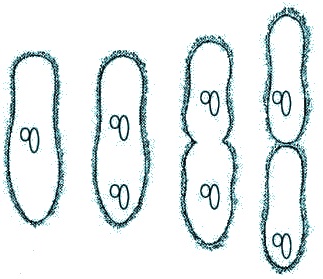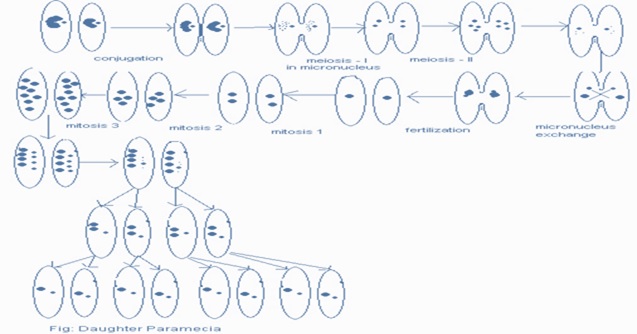Reproduction in protozoa Assignment Help
Reproduction is one of the essential mechanisms that maintain the continuity of particular group of species on the earth. Reproduction takes place by two main methods: sexual and asexual. In case of sexual reproduction, fusion of male gamete with the female takes place, thus forming zygote. On the other hand, in case of asexual reproduction, only one parent is involved and no fusion of gamete takes place. When we particular talk about protozoan, both types of reproduction takes place: asexual as well as sexual. Some species have sexual reproduction whereas others have asexual reproduction in their mode of life.
Asexual reproduction in protozoan: In this type of reproduction, no fusion of pronuclei takes place. It occurs when all the environmental condition are favorable like temperature, water and nutrition. There are different forms of asexual reproduction: budding, fission, gemmation, plasmotomy and sporulation.
Fissions are of two types:
Binary Fission definition:

It is the process where the division of nucleus along with the cytoplasmic division takes place which is called karyokinesis and cytokinesis respectively. Binary fission is one of the most common method of reproduction in protozoan. In different group of protozoan the division takes place differently that involves various plane of symmetry. In Amoeba the division is irregular whereas in Euglena it’s longitudinal. Likewise, in paramecium; it is transverse. In case of binary fission, firstly the cell nucleus divides into daughter nuclei and then division of cytoplasm takes place. Hence, the newly formed organism has 1 new copy of DNA.
Multiple fission: It is the division of nucleus into several daughter cells. Firstly, parent cell divide its nucleus into many nuclei and then the cytoplasmic division takes place. It is generally seen in sarcodines. A word that is frequently heard in case of multiple division is schizogony. It is the process of asexual multiple division in protozoan.
Plasmotomy: In this case, only the cytoplasm divide and not the nucleus. It is because the parent already has multinuclei and hence after the division of cytoplasm, multinucleate daughter is formed. Example includes: Opalina
Budding: It is also one of the most common method of division in protozoan. In this process, a small outgrowth is first seen in the parent organism which is known as bud. This outgrowth slowly gets separated from the parent having an individual nuclei. There can be only one bud or multiple buds can be located. Example includes suctorian protozoan.
Sexual reproduction: When reproduction takes place by the fusion of pronuclei, it is called sexual reproduction. Thus in this case genes of both the parents are present in the daughter cell. This process takes place in two ways: syngamy and conjugation.
Syngamy: Syngamy is the complete fusion of both the gametes.
Reproduction in protozoa Assignment Help By Online Tutoring and Guided Sessions at AssignmentHelp.Net
Conjugation:

Conjugation is the process that takes place when the environment condition is not favorable. Two individuals who are inactive and have different mating types participate in this kind of reproduction. Steps involved in the process of conjugation are as follows:
- Binary fission takes place with unequal division of nuclei.
- The larger nucleus is called macro and the smaller is called micro, hence the conjugants are called macroconjugants and microconjugants.
- They get attached to each other at the aboral end forming a cytoplasmic bridge.
- The macronucleus gets degenerated.
- Meiosis division of micronucleus results in the formation of 4 haploid nuclei in each conjugant.
- Among the four, 3 degenerates and one remains and this remaining nucleus undergoes mitosis division forming two unequal nuclei called macro and micro nucleus respectively.
- The smaller micronuclei of each conjugant cross the cytoplasmic bridge and migrate to the opposite conjugant. Hence, the smaller is called male pro nucleus and the larger is called female pro nucleus.
- Both male and female pronucleus of each conjugant now fuses to form zygote and the process is called amphimixis.
- Both these conjugant separates and hence are now called ex-conjugant.
- Zygote in each ex-conjugant divides 3 times mitotically forming 8 nuclei. Among these 8, four are larger called micronucleus and rest 4 are smaller called micronucleus. Again, from the 4 micronucleus; 3 degenerate and one remains active and this active micronuclei divides into two. Each conjugant also divides by binary fission into two paramecia thus sharing the macronucleus.
- Again, the division of micronuclei of daughter paramecia takes place along with the division of paramecia to form more of the daughter paramecia. Finally, micro and macro nucleus are equally shared between the daughter paramecium that are total 8 in number.
These are the ways by which reproduction takes place in protozoan and hence maintains the continuity of this species.
This topic is quite simple to understand but completion of assignment can be little tough. So, if you are looking for the assignment on conjugation in paramecium, visit our site: assignmenthelp.net. This online site provides students with lots of stuff in effective completion of conjugation in paramecium assignment. The steps and login procedure are simple and easy to follow and the charges for the assignments are even low.


